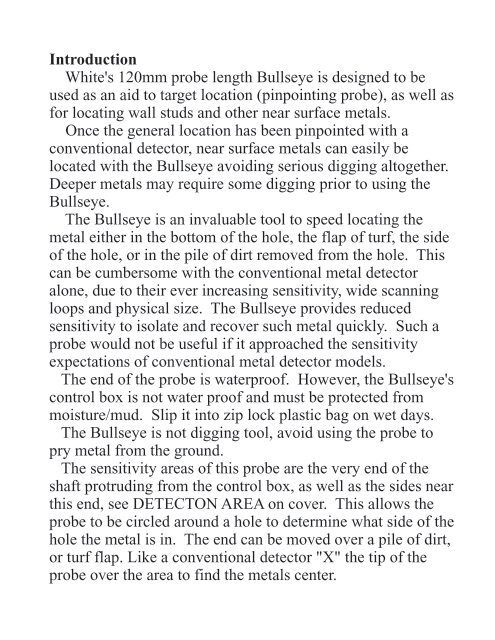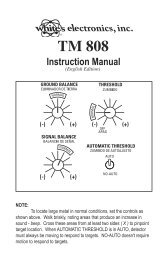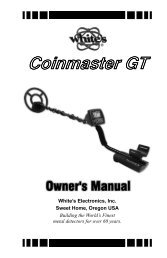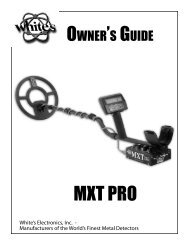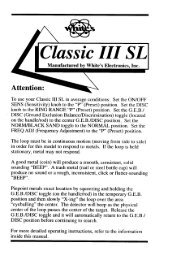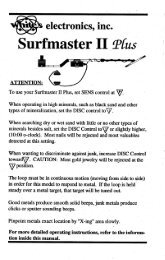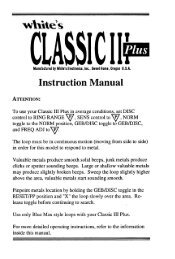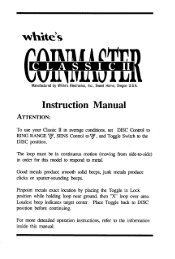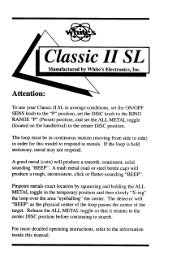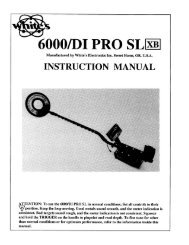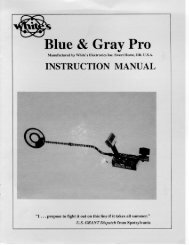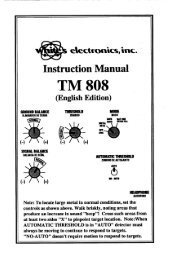120mm BULLSEYE 2 - White's Metal Detectors
120mm BULLSEYE 2 - White's Metal Detectors
120mm BULLSEYE 2 - White's Metal Detectors
You also want an ePaper? Increase the reach of your titles
YUMPU automatically turns print PDFs into web optimized ePapers that Google loves.
Introduction<br />
<strong>White's</strong> <strong>120mm</strong> probe length Bullseye is designed to be<br />
used as an aid to target location (pinpointing probe), as well as<br />
for locating wall studs and other near surface metals.<br />
Once the general location has been pinpointed with a<br />
conventional detector, near surface metals can easily be<br />
located with the Bullseye avoiding serious digging altogether.<br />
Deeper metals may require some digging prior to using the<br />
Bullseye.<br />
The Bullseye is an invaluable tool to speed locating the<br />
metal either in the bottom of the hole, the flap of turf, the side<br />
of the hole, or in the pile of dirt removed from the hole. This<br />
can be cumbersome with the conventional metal detector<br />
alone, due to their ever increasing sensitivity, wide scanning<br />
loops and physical size. The Bullseye provides reduced<br />
sensitivity to isolate and recover such metal quickly. Such a<br />
probe would not be useful if it approached the sensitivity<br />
expectations of conventional metal detector models.<br />
The end of the probe is waterproof. However, the Bullseye's<br />
control box is not water proof and must be protected from<br />
moisture/mud. Slip it into zip lock plastic bag on wet days.<br />
The Bullseye is not digging tool, avoid using the probe to<br />
pry metal from the ground.<br />
The sensitivity areas of this probe are the very end of the<br />
shaft protruding from the control box, as well as the sides near<br />
this end, see DETECTON AREA on cover. This allows the<br />
probe to be circled around a hole to determine what side of the<br />
hole the metal is in. The end can be moved over a pile of dirt,<br />
or turf flap. Like a conventional detector "X" the tip of the<br />
probe over the area to find the metals center.


